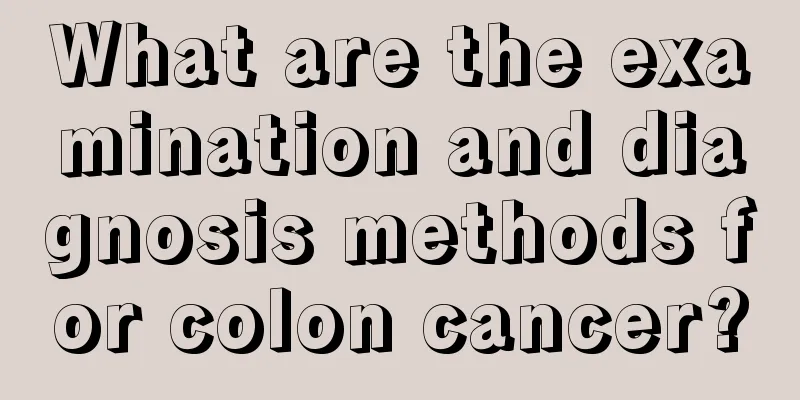What are the examination and diagnosis methods for colon cancer?

|
What are the examination and diagnosis methods for colon cancer? I believe many patients have this question. If we want to treat colon cancer well, we should have some knowledge about it. Let us follow the experts to learn about the diagnosis methods of colon cancer . 1. Fecal occult blood test (FOBT) is one of the earliest diagnostic methods for colon cancer. In 1967, Greegor first used FOBT for colon cancer examination in asymptomatic people, and it is still a practical screening method. There are chemical and immunological methods for FOBT. Chemical methods include benzidine test and guaiacol test, but the specificity is not ideal. Immunological methods include single immunoassay (SRID), latex agglutination (LA), countercurrent immunoelectrophoresis (CIE), immunoenzyme-labeled immunosorbent assay (ELISA) and reverse indirect hemagglutination assay (RPHA), among which RPHA is more suitable for large-scale screening. The sensitivity of RPHA is 63.6%, which is lower than the 72.7% of the benzidine method, while the specificity of RPHA is 81.9%, which is higher than the 61.7% of the benzidine method. Therefore, RPHA as a primary screening can significantly reduce the number of people who need to be rescreened, and there is no need to control diet, which is easily accepted by the census population. 2. Cytological diagnosis. The methods of exfoliative cytological examination of colon cancer include: rectal washing, brushing under direct vision of colonoscopy, wiping with wire mesh balloon, and smear examination of the lesion. However, it is more practical to use brushing under colonoscopy or smear examination of the lesion. If malignant cells are found, it has diagnostic significance. If it is suspected to be malignant or has nuclear heterogeneity with slightly enlarged nuclei and increased chromatin, it is not enough to make a final diagnosis, but it is suggested that a reexamination or biopsy should be performed for confirmation. Although malignant tumor cells are found in the exfoliated cells, the treatment plan should still be determined based on the histopathological diagnosis. 3. Histopathological examination is also a diagnostic method for colon cancer. Pathological examination of biopsy specimens is an essential basis for formulating treatment plans. The above is an introduction to the diagnosis of colon cancer. I hope the above content can help you. I also hope that patients with colon cancer can actively seek treatment, maintain a good attitude, and recover soon! For more information, please visit the colon cancer special topic at http://www..com.cn/zhongliu/jca/ or consult an expert for free. The expert will then give a detailed answer based on the patient's specific situation. |
<<: What are the main symptoms of colon cancer?
>>: Brief analysis of the clinical symptoms of pancreatic cancer
Recommend
What medicine is effective for cold, cough and phlegm
There are many reasons for colds, coughs and phle...
What are the sequelae of orthodontics?
Orthodontics is actually a professional term for ...
What should I do if my belly button falls off and bleeds
The belly button is an organ that is not of much ...
How to do the secret of nourishing kidneys with one movement?
Kidney health is very important to everyone. Many...
Where should I cupping when my throat hurts
Cupping in traditional Chinese medicine is a meth...
How to treat ultraviolet allergy
Ultraviolet rays are very common in life. They ca...
What is the normal value of human white blood cells
There are red blood cells and white blood cells i...
Can Adapalene gel remove acne scars?
There are many reasons for facial acne, which is ...
What are the indications for clindamycin phosphate
Clindamycin phosphate is a chemically synthesized...
How to effectively treat anal fissure and blood in the stool
If anal fissure causes blood in the stool, it wil...
Can red tattoos be washed off?
Anyone who has had a tattoo knows that black tatt...
How to repair the pores on the nose
If pores appear on your nose, don't worry too...
What is the difference between fetal movements of male and female babies?
Although gender discrimination no longer exists, ...
The difference between pimples and skin cancer
Every summer, I eat a lot of seafood, and maybe t...
Dietary principles for breast cancer patients after surgery
Breasts are a symbol of femininity. Everyone hope...









